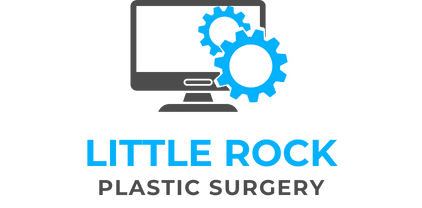In an ever-evolving technological landscape, the management of IoT devices has become pivotal. As the number of connected devices surges, so does the complexity of their management. The question, “How to develop a secure and scalable platform for IoT device management?” is more relevant than ever. In this article, we will explore the essentials of building a robust and secure platform that can handle the diverse needs of Internet of Things (IoT) device management.
The Importance of Secure and Scalable IoT Device Management
Developing a secure and scalable IoT platform is crucial for the success of any IoT deployment. IoT devices generate a vast amount of data that needs to be efficiently managed and secured. Without proper device management, the network can become vulnerable to cyber threats, and the performance of IoT applications can be compromised.
Also to read : What are the methods for ensuring data integrity in distributed ledger technologies?
A solid IoT platform should provide real-time monitoring, control, and remote management capabilities. These features ensure that devices operate efficiently and securely, even when distributed across vast geographical areas. Additionally, the platform should support edge computing to process data closer to the source, reducing latency and improving responsiveness.
Essential Features of an IoT Device Management Platform
When designing an IoT device management platform, several key features need to be integrated to ensure its effectiveness and scalability.
Additional reading : Streamline your day : the benefits of an ai personal assistant !
Device Onboarding and Provisioning
Seamless device onboarding is critical for any IoT deployment. The platform should allow for the effortless addition of new devices to the network, ensuring they can securely connect and communicate from the start. This process should include secure authentication mechanisms to prevent unauthorized devices from accessing the network.
Real-time Monitoring and Control
Real-time monitoring of IoT devices is essential for maintaining operational efficiency. The platform should provide a dashboard that displays the status of all connected devices, alerting you to any anomalies or performance issues. This allows for proactive maintenance and quick resolution of any problems that arise.
Data Security and Privacy
Security is a paramount concern in IoT development. The platform should employ end-to-end encryption to protect data during transmission and storage. Additionally, it should adhere to data privacy regulations and offer features such as role-based access control to restrict access to sensitive information.
Scalability
As your IoT deployment grows, the management platform must scale accordingly. The platform should be built on a robust cloud infrastructure that can handle increasing data volumes and device connections without compromising performance.
Integration with Existing Systems
An effective IoT platform should seamlessly integrate with your existing IT infrastructure and software systems. This includes compatibility with popular cloud providers like AWS IoT, allowing for smooth data flow and better resource utilization.
Choosing the Right IoT Platform for Your Needs
Selecting the right IoT platform is a critical step in the development process. There are several factors to consider when making this decision, including the platform’s features, scalability, and security measures.
Assessing Platform Features
Evaluate the features offered by various IoT platforms to determine which one best meets your needs. Look for platforms that offer comprehensive device management, real-time monitoring, and remote management capabilities. Additionally, consider platforms that support edge computing, as this can significantly enhance the performance of your IoT applications.
Evaluating Scalability
Scalability is a crucial factor in the long-term success of your IoT deployment. Choose a platform that can easily scale to accommodate additional devices and data as your network grows. Cloud-based platforms, such as AWS IoT, offer excellent scalability and flexibility, making them a popular choice for many IoT deployments.
Ensuring Security
Security should be a top priority when selecting an IoT platform. Look for platforms that offer robust security features, including end-to-end encryption, secure device authentication, and data privacy protections. Platforms like Digi Remote Manager are known for their focus on security, making them a reliable choice for managing IoT devices.
Compatibility with Existing Systems
Ensure that the IoT platform you choose can integrate seamlessly with your existing IT infrastructure and software systems. This will help streamline data flow and improve overall system efficiency. Compatibility with popular cloud providers, such as AWS IoT, is also an important consideration.
Implementing Edge Computing for Enhanced Performance
Edge computing is a powerful technology that can significantly enhance the performance of your IoT platform. By processing data closer to the source, edge computing reduces latency and improves the responsiveness of your IoT applications.
Benefits of Edge Computing
Edge computing offers several benefits for IoT device management, including:
- Reduced Latency: By processing data at the edge of the network, you can reduce the time it takes for data to travel back and forth between devices and the cloud. This results in faster response times and improved performance for your IoT applications.
- Improved Data Security: Processing data at the edge reduces the amount of sensitive information transmitted over the network, enhancing data security and privacy.
- Enhanced Scalability: Edge computing allows for more efficient use of network resources, enabling your IoT platform to scale more effectively.
Integrating Edge Computing into Your IoT Platform
To leverage the benefits of edge computing, you need to integrate it into your IoT platform. This can be done by deploying edge devices that can process data locally and communicate with the central platform. These edge devices should be equipped with the necessary processing power and storage capacity to handle the data generated by your IoT devices.
Monitoring and Managing IoT Devices with Digi Remote Manager
Digi Remote Manager is a powerful tool for monitoring and managing IoT devices. It offers a comprehensive suite of features that can help you keep your IoT deployment running smoothly and securely.
Key Features of Digi Remote Manager
Digi Remote Manager offers several key features that make it an excellent choice for IoT device management, including:
- Real-time Monitoring: Digi Remote Manager provides a real-time dashboard that displays the status of all connected devices, allowing you to quickly identify and address any issues.
- Secure Device Management: Digi Remote Manager offers robust security features, including end-to-end encryption and secure device authentication, to protect your IoT network.
- Remote Management: With Digi Remote Manager, you can remotely monitor and manage your IoT devices from anywhere in the world, ensuring they operate efficiently and securely.
- Scalability: Digi Remote Manager is built on a scalable cloud infrastructure, enabling it to handle increasing data volumes and device connections as your IoT deployment grows.
Using Digi Remote Manager for IoT Device Management
To use Digi Remote Manager for IoT device management, you need to integrate it with your existing IoT platform. This can be done by deploying Digi-compatible devices and configuring them to communicate with Digi Remote Manager. Once integrated, you can use Digi Remote Manager to monitor and manage your IoT devices in real-time, ensuring they operate efficiently and securely.
In conclusion, developing a secure and scalable platform for IoT device management is essential for the success of any IoT deployment. By incorporating key features such as device onboarding and provisioning, real-time monitoring and control, data security, and scalability, you can build a robust platform that meets your needs. Additionally, leveraging edge computing and tools like Digi Remote Manager can further enhance the performance and security of your IoT platform.
When selecting an IoT platform, carefully evaluate the features, scalability, and security measures offered by each option. Choose a platform that integrates seamlessly with your existing systems and supports popular cloud providers like AWS IoT. By following these guidelines, you can develop a secure and scalable IoT platform that will support the growth and success of your IoT deployment.
For a deeper dive into the latest trends and tools in IoT device management, feel free to read our blog and stay updated with the evolving landscape of the Internet of Things.











